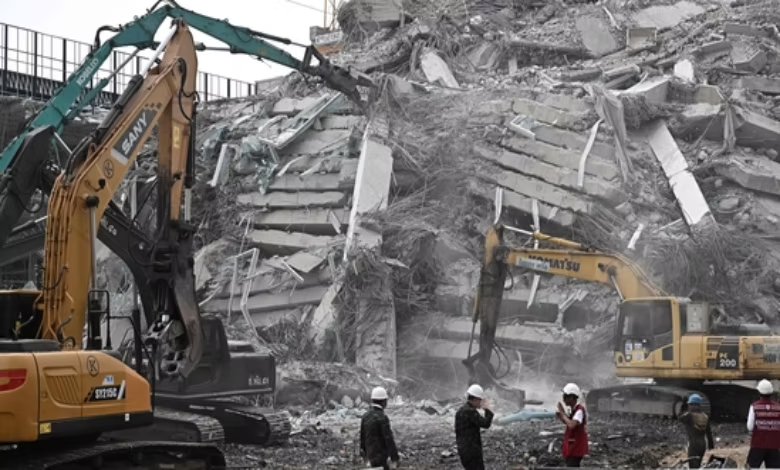Bangkok Skyscraper Collapse Spurs Urgent Probe Amid Myanmar Earthquake, Chinese Firm Involved

A powerful 7.7 magnitude earthquake struck Myanmar on Friday—about 1,000 km from Bangkok—triggering the sudden collapse of a 33-storey high-rise under construction in the Thai capital. Deputy Prime Minister Anutin Charnvirakul, who inspected the site on Saturday, has ordered an immediate investigation into the incident, raising questions about what went wrong with the structure, which was being built through a joint venture involving a Chinese company.
According to reports, the building—intended to serve as the unfinished headquarters for Thailand’s State Audit Office—crumbled during the severe shaking despite the presence of cranes. Eight bodies have already been recovered from the debris, and concerns are mounting over whether a design flaw or substandard construction methods caused the collapse. Civil engineer and Democrat Party member Prof Suchatchavee Suwansawas told The Telegraph UK that something was “definitely” amiss, noting that other high-rise constructions have remained intact, which points to potential errors in design or building practices.
The structure, which had been under construction for three years at a cost exceeding two billion Thai baht (approximately $58 million), was a product of a partnership between Italian-Thai Development Plc and China Railway Number 10 (Thailand) Ltd. The latter is a subsidiary of China Railway Number 10 Engineer Group Company, holding the maximum foreign share allowed in Thai enterprises. Local media noted that China Railway Number 10 Thailand, established in 2018, has been active in building office and residential complexes, as well as public infrastructure. In 2023, the company reported a net loss of 199.66 million baht on revenues of 206.25 million baht, with key shareholders including Sophon Meechai (40.80%), Prachuab Sirikhet (10.20%), and Manas Sri-anant (3%).
In response to the disaster, the Ministry of Industry has dispatched an inspection team to determine if poor-quality steel or engineering errors played a role in the collapse. Meanwhile, Deputy Prime Minister Charnvirakul has set up a high-level probe, instructing the committee to report back within seven days on the causes behind the building’s failure.
Local authorities in Bangkok have reported at least 18 fatalities, 33 injuries, and 78 people missing—most of whom are believed to be workers trapped under the rubble. Rescue efforts are ongoing, with teams of police officers and rescue dogs working tirelessly to locate survivors within the crucial first 72 hours, as reported by Reuters.
In Myanmar, the quake has been even more devastating, with around 1,700 deaths, 3,400 injuries, and over 300 people reported missing as of Sunday. Experts have suggested that the shallow depth of the earthquake—just 10 km beneath the surface—amplified the shaking, comparing its energy to that of “334 atomic bombs.” Dr Rebecca Bell from Imperial College London explained to the BBC that the straight nature of the fault allowed energy to travel southward along a 1,200 km stretch toward Thailand.
Adding to the challenges, Bangkok’s soft soil may have intensified the seismic waves. Prof Amorn Pimarnmas, president of the Structural Engineers Association of Thailand, mentioned to the BBC that although earthquake-resistant standards exist in 43 provinces, less than 10% of buildings are truly prepared for such events. He also pointed out that the use of a “flat slab” construction—where floors rest directly on columns without beams—could have contributed to the sudden collapse. Dr Christian Málaga-Chuquitaype from Imperial College London likened this design to a table supported solely by its legs, which, while cost-effective and architecturally appealing, tends to perform poorly during seismic events.
Amidst the tragedy, thermal imaging drones have identified signals that may indicate the survival of at least 15 people under the wreckage. However, hope is fading as families await further news. One such family member, Pat Kongporn, who said her parents were trapped beneath the debris, told The Telegraph that she had spoken with them shortly before the earthquake struck.




